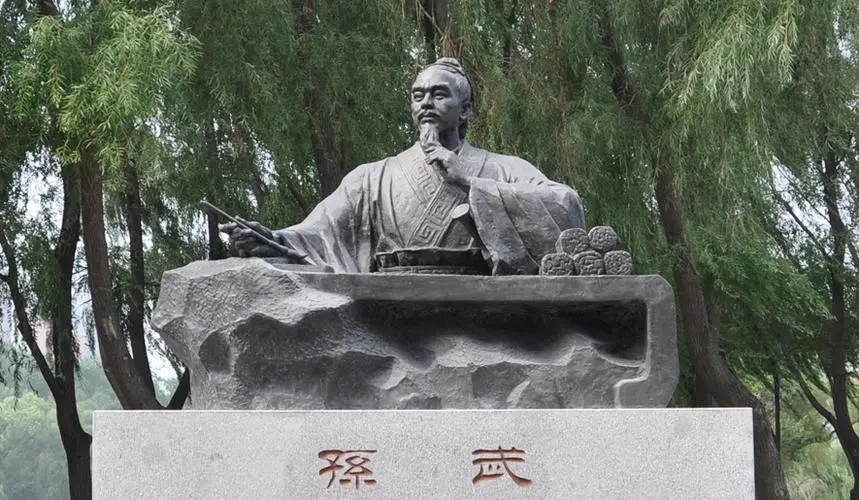Introduction: The “Art of War” by Sun Tzu, despite originating thousands of years ago, continues to hold significant relevance and practical value in today’s world. Many individuals and organizations apply the principles and wisdom of the “Art of War” across various domains, from military strategy to business management, leadership development, and personal growth. This article will analyze the practical applications and value of the “Art of War” in contemporary contexts, exploring its impact and insights on the modern world.
I. Coexist with Weaknesses, Advance Amidst Challenges
Sun Tzu said: The one who seizes the battleground first waits for the enemy in comfort, while the one who arrives later rushes into battle laboriously.
Everyone has weaknesses; attempting to resolve them is futile. Learn to coexist with them. In personal encounters, when adversaries seem evenly matched, the reality is that each person brings unique strengths and weaknesses. It’s the concept of “what they lack, I have; what they possess, I lack.” This applies not just individually but to the larger team as well.
II. Never Forget Strategy, Beware the Allure of Greed
Hence, a skilled warrior can lead others without revealing his own position. The ability to lure the enemy to where they must strive and deceive their satisfaction or security can be harmful.
“Deception and Reality” strategies like luring the enemy deep, aiding besieged allies, waiting for exhaustion, and bluffing are essential. Your opponents might employ these tactics, so it’s crucial not to panic, adhere to strategy, and resist greed, remaining true to the original plan.
III. Strike When Unprepared, Defend Against Unnecessary Attacks
Strike where they are least prepared, take advantage of their unexpected vulnerabilities. Traveling a thousand miles without fatigue is achieved by traversing deserted paths.
Attack when the enemy’s defenses are weak; defend when they’re not attacking. Attacking an unguarded spot leads to victory, and defending where there’s no assault secures positions.
The idea is to prevent the enemy from reinforcing the attacked location. While strategizing in war, every team must be positioned for rapid reinforcement, guarding all possible directions to deny the enemy any exploitable advantage.
IV. Unity of Knowledge and Action!!!
Skilled attackers make the enemy unaware of their defenses; skilled defenders make the enemy unaware of their attacks. Subtle yet profound, to the point of being invisible and inaudible, allowing you to control the enemy’s fate.
This section emphasizes intelligence and deception but ultimately underlines the importance of judgment and discernment. Acknowledge that there are things you don’t know; true knowledge comes from recognizing your ignorance. Admitting this opens the door to wisdom.
V. Focus on Real Weaknesses
Move in a way that can’t be blocked, targeting the enemy’s vulnerabilities. Retreat in a manner that can’t be pursued, quick yet elusive.
In battle, when an enemy exhibits weaknesses, launch a swift attack and then withdraw rapidly. Lin Biao’s tactics involved the rapid pursuit and assault, striking at weaknesses. Once the battle begins, there’s no need for judgment; direct pursuit is the strategy.
VI. Lifelong Achievements: Digest Failures through Successes
If I desire battle and the enemy, despite fortified defenses, is compelled to fight me, it’s because I attack where they must defend. If I don’t desire battle, I draw lines to defend, making the enemy reluctant to engage me.
Creating doubt in the enemy’s mind leads to victory. In decision-making, being “doubtful” and “misled” is actually beneficial. From a statistical perspective, this approach reduces error rates and accumulates greater successes, resulting in lifelong accomplishments.
VII. One Meter Wide, Ten Thousand Meters Deep
Shape your forces in such a way that they’re invisible; in their invisibility, they’re beyond scrutiny, beyond the schemes of the wise.
“Shaping” involves reconnaissance and drawing inferences before sending someone to verify. Then, it’s about creating an information gap, scattering enemy forces. Acknowledging your weaknesses without pursuing universal competence, continuously honing your strengths, is like being a mile wide and ten thousand meters deep.
VIII. If Battle Is Inevitable, Control the Place and Time
Know the battlefield and the timing of battle, then you can engage in a battle over a thousand miles.
Lack of knowledge about the battlefield and timing results in a situation where the left cannot aid the right, the right cannot aid the left, and so on. This lack of coordination extends to tens of miles away. By judging this, even if the enemy’s forces are numerous, they do not add to victory or defeat.
It’s about assessing the situation and judging if there’s an opportunity to set up an ambush over a great distance. If not, refrain from sending troops, making the enemy labor in vain. The victory can be known but not initiated. In this context, initiating conflict is necessary.
IX. Before Striking, Understand the Battle Situation
Understanding strategies to discern gains and losses, actions to perceive movement, formations to comprehend life and death situations, angles to recognize inadequacies and excesses.
This segment focuses on pre-battle strategies to understand victory prospects and is about political, resource, power, and strategic successes. Once the battle commences, tactical insight into the enemy’s moves, adapting to circumstances, focusing attacks on weaknesses, and seizing opportunities are paramount.
X. Learn from Me to Live, Imitate Me to Die
Shaping your forces to be invisible makes you enigmatic; your invisibility makes you unassailable, even to wise adversaries.
What others see as the reasons for your victories are only superficial forms. True key factors for success are the existing conditions and the commander’s accumulated skills and experiences. Hence, in studying military strategies, immerse yourself in the perspective of being “shaped by others.” Learning how to avoid defeat precedes learning how to triumph.
XI. Calculate the Cost of Failure Before Grasping for Victory
Military formations are akin to water; water adapts to low grounds. Military formations avoid solid defenses and attack the gaps. Water adapts according to the terrain; military strategies adapt according to the enemy. Therefore, flexible strategies tailored to the enemy’s actions are considered divine. The elements and seasons fluctuate; the days have their lengths, and the months, their birth and death.
Adaptation according to the enemy’s moves signifies divine skill. As I’m not divine, my initial goal is to lead others without being led astray—staying centered and true to the fundamental principles. Adhering to Sun Tzu’s eternal values—seeking wholeness despite expecting defeat, avoiding conflict as the foremost strategy, winning before battling, and concluding in a single battle.
This rendering may slightly diverge from the original text for a more comprehensive interpretation in English.
I. Business Management: In the realm of business, the principles of the “Art of War” find widespread application, viewed as a successful operational strategy. The key principle of “know yourself, know your enemy” is crucial. In a fiercely competitive business environment, understanding one’s own strengths and weaknesses while delving into competitors’ strategies and goals aids in formulating effective business strategies and market positioning. Additionally, emphasizing the importance of adaptability and flexibility through “unending changes” and “the art of war is governed by change” enables companies to swiftly respond to market fluctuations and challenges.
II. Leadership Development: The “Art of War” provides valuable guiding principles for leaders. The emphasis on “moral integrity comes first” underscores the significance of ethics and morals in leadership. In the contemporary world, a leader’s character and values are paramount to organizational success and employee loyalty. Furthermore, “clear rewards and punishments” and “demonstrate authority with power” highlight the leader’s authority and decisiveness in managing teams, ensuring organizational goal attainment and team cohesion.
III. Personal Growth: The applicability of the “Art of War” extends beyond organizations and teams to personal growth and success. The principle “know yourself, know your enemy, and you will not be imperiled in a hundred battles” encourages individuals to understand their capabilities and traits while also being aware of external changes and challenges. This helps individuals set clear goals and take appropriate actions for success. Additionally, the emphasis on “forethought and planning” underscores the importance of preparation, enabling individuals to better navigate various situations and challenges.
IV. Military Strategy: Although the “Art of War” is an ancient military classic, its principles and strategic thinking remain relevant in contemporary military contexts. Principles such as “use strategic advantage” and “the way of spying” highlight the importance of intelligence gathering and utilization, assisting military commanders in gaining an advantage and formulating strategic plans. Furthermore, the concept of “unite to attack, do not attack if victory is uncertain” advises military leaders to flexibly employ offensive and defensive strategies to maintain strategic superiority.
V. International Relations: In the field of international relations, the principles of the “Art of War” are widely cited and applied. Concepts such as “all warfare is based on deception” and “make use of spies” underscore the importance of strategic competition and information gathering between nations. Moreover, “attack where the enemy is unprepared and appear where you are not expected” and “avoid the sharp and attack the unprepared” emphasize flexibility and strategic decision-making, enabling nations to maintain a relative advantage in international affairs.
Conclusion: The “Art of War,” as an ancient military classic, continues to possess practical applications and value in today’s world. Whether in business management, leadership development, personal growth, military strategy, or international relations, its principles and ideologies provide valuable guidance and insights. By applying the wisdom of the “Art of War,” individuals and organizations can better confront challenges, formulate effective strategies, and achieve success. Therefore, the enduring impact and value of the “Art of War” remain undeniable in the contemporary world.


